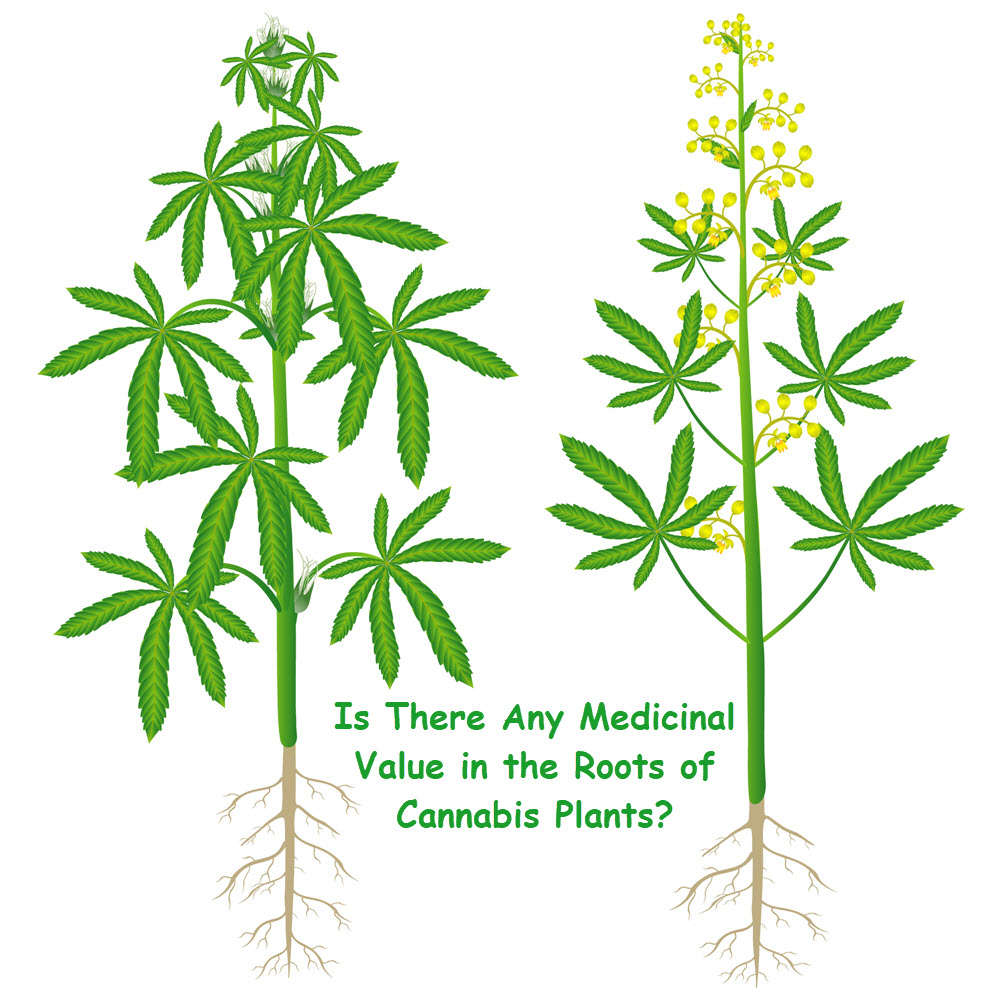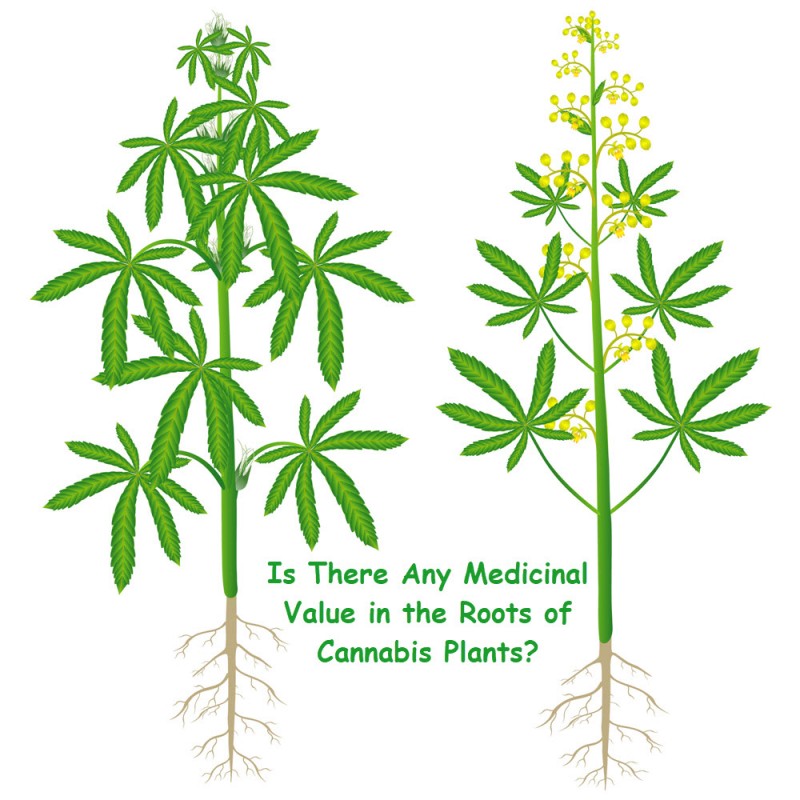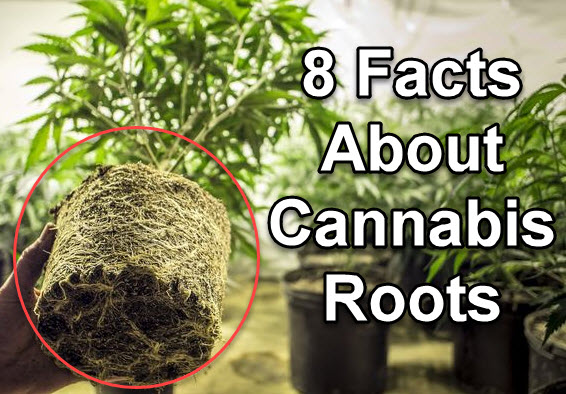The Medicinal Value of Cannabis Roots

Root medicine goes back an exceedingly long time. But should this traditional therapy be overlooked in today’s modern world? What potential does it have to be integrated into modern medicine? Much more attention is paid to cannabis flowers and leaves, but everything of the plant can be used. From the top of the plant to the roots, cannabis has a use for therapeutic benefits.
For ages, roots formed part of medicinal treatment. It goes back as far as 77 AD where the curative qualities of cannabis roots were noted down by a Latin naturalist, Pliny the Elder. Cannabis roots were used for many conditions, and scientists are now, in modern times, also starting to look more intensely to see how it could find a place in therapeutic medicine. They are using historic notes to learn how ancient healers used the roots in medicine. With several chemical analyses, they are able to confirm what natural healers had known for an exceptionally long time.
How Do Cannabis Roots Work as a Medicine?
As we look back to the first century, we see that they used the root by putting it in water to treat stiffness in the joints, gout, and related illnesses. As time progressed, by the 17th century, healers now recommended cannabis root extractions to treat inflammation as well apart from gout and stiffness in joints. Through the centuries, people valued the roots. Obviously, in those times, cannabis roots were not the only root used in traditional medicine.
Some of the conditions treatable by cannabis root include fever, inflammation, infections, gout, arthritis, joint pain, and even postpartum bleeding. History tells us that it was also used for sexually transmitted diseases, hard tumors, and skin burns. So, true to the multiple benefits of cannabis, cannabis roots have many possibilities. In ancient times, the roots were mostly boiled and then turned into a tea of sorts or a topical ointment.
What are the active compounds in Cannabis Roots?
The composition of cannabis root and its potential medical value has to be proven by scientists today. Studies have proven that cannabis root components provide significant support to the historical and ethnobotanical claims of clinical efficacy. The understanding of how it should be prepared and what the effect is on certain conditions still needs a lot more exploration. But needless to say, over the centuries, healers had proven it to have medicinal benefits. The active ingredients include:
Alkaloids like cannabisativine and anhydrocannabisativine
Triterpenoids like Friedelin and Tepifriedelanol
Carvone
Dihydrocarvone
Sterols like sitosterol, campesterol, and stigmasterol
Other minor compounds like choline
The Conditions Treatable by Cannabis Roots
It is always great when history and modern times merge, especially when old usage of medicines, like cannabis roots, is acknowledged for what it is worth. Modern science just confirms it. Some of the conditions treatable are:
Inflammation – Cannabis roots are rich in triterpenoids (carbon skeleton-based units). It contains friedelin and its derivate epifriedelinol. They both show significant anti-inflammatory activity. To target an inflammation, the root normally gets boiled to get a liquid called a decoction. The dissolved liquid is used for tinctures, teas, or a poultice. The cool, anti-inflammatory properties of cannabis roots can be used from head to toe, external or internal.
Pain and Skin Burns – Cannabis roots contain monoterpenes at a lower rate. Carvone and Dihydrocarvone show analgesic effects. It modulates the TRPM8 ionotropic receptor, which is sensitive to cooling and pain. Carvone’s antinociceptive activity is currently under investigation as a treatment for osteoarthritis. The sterols found in cannabis roots also show significant analgesic activity.
Gout and Arthritis – a topical administration of cannabis roots have been used for a long time to treat gout and arthritis. It was also used to ease hard tumors of the joints. The roots could be boiled as mentioned above or pounded and mixed with a fatty substance to apply topically.
Fever – because of the anti-inflammatory properties in the root, it has also antipyretic or fever-reducing properties. Friedelin shows a significant reduction of internal body heat when it was tested on animals. Comparing it to modern medicine, it has the same effects as Paracetamol, commonly used to reduce fever. It could be taken internally, but even a compress made of cannabis roots, reduce fever significantly.
Postpartum Care and Childbirth- Friedelin has also got estrogenic activity. In Ayurvedic medicine, it is used as an aphrodisiac. Friedelin found in other plants are known to be used for stimulating menstruation and for balancing estrogen during menopause.
Antidiabetic – cannabis roots also contain lignans. Several unique cannabis compounds do not exist anywhere else in the botanical world. Lignans are very potent antioxidants that operate through antiviral, antidiabetic, anti-obesity, and antitumoral channels. The structural similarity of lignans and mammalian estrogens underline the potential efficacy of them to combat some hormone-dependent cancers. It would also be able to prevent breast cancer.
Afterthoughts
When cannabis roots were used many years ago, the complexity of modern medicine was not that much at play. More studies have to be done to see how it interacts with some medication, just like it is done with THC and CBD. Other than that, cannabis root shows a great potential to be used in alternative treatment.
CANNABIS ROOTS, READ MORE...
WHAT CAN YOU USE YOUR CANNABIS ROOTS FOR AT HOME?







